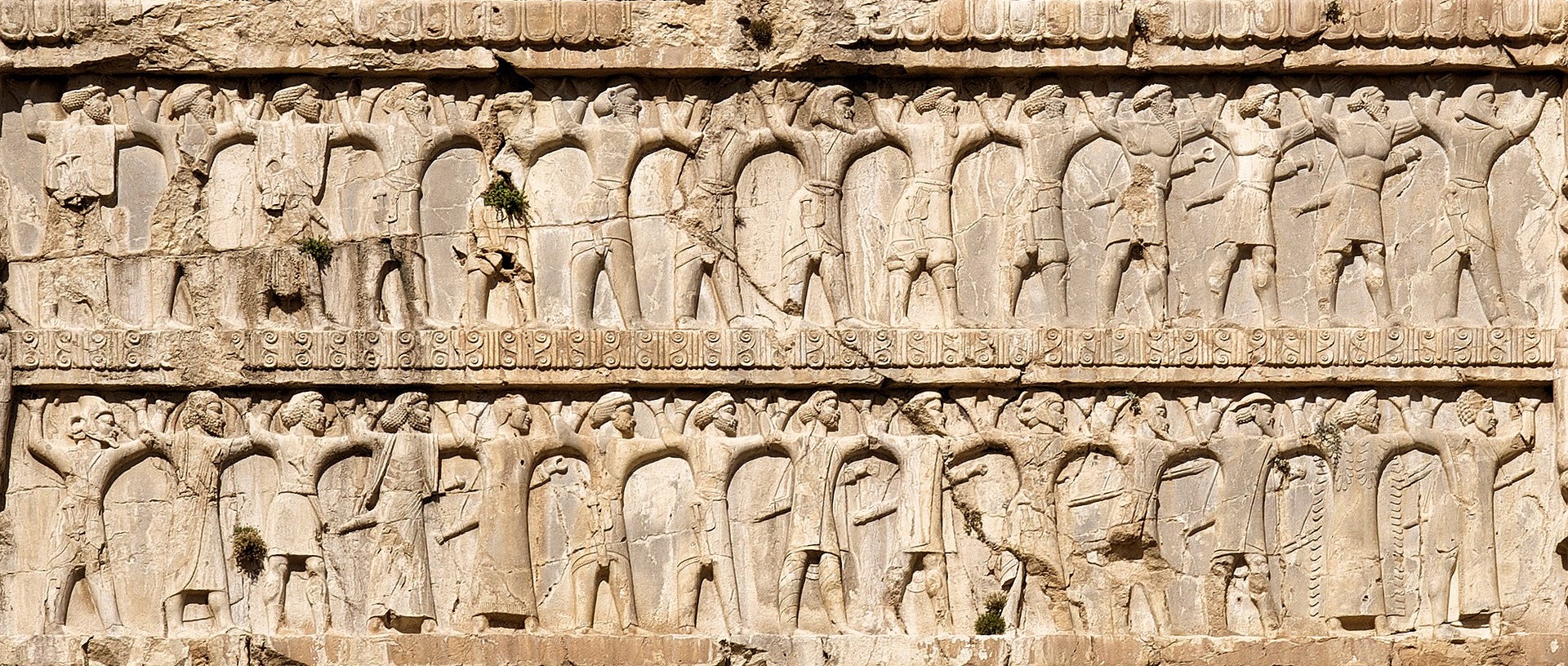Xerxes the Great

The Persian king who nearly conquered Greece

The first of many Persian empires was the Achaemenid Empire. Based in the city of Persepolis in modern-day Iran, the Achaemenid Empire stretched from the Balkans to the Indus River. They conquered Egypt and Babylonia, and were the world's premier military power. The King of Kings, who led the Achaemenid, ruled over his vast domain through his satraps,
At its peak, Achaemenid Persia is believed to have ruled over a third of the world's population–upwards of 35 million people in the years 300 BCE, making it history's largest empire by share of population.
The Achaemenid Empire was founded by Cyrus II, also called Cyrus the Great, the king of Persia. He led the Persians to rebel against the Median Empire (also based in Iran). Cyrus defeated the Medes and conquered their capital of Ecbatana. He then fought a series of wars against the Medes former vassals and rivals. This led to the Fall of Babylon in 540 BCE. Cyrus is actually referenced in the Bible, in Isaiah 45; the Hebrew God blesses Cyrus and grants him immense conquest, despite Cyrus not believing in Him. Cyrus is credited with freeing the Hebrews from the Babylonian exile.
The Greco-Persian Wars
The Greco-Persian Wars were a series of conflicts in which Persia tried to dominate the Aegean Sea and control more territory beyond Asia Minor.
After Cyrus, there was dispute over who would succeed. Eventually the throne went to Darius I, also called Darius the Great. Darius was also a conqueror, and he led troops into Europe to gain more territory. He succeeded in conquering Thrace, and led troops as far as Russia. He was unable, however, to conquer Macedonia and the wealthy city-states of Greece. He was defeated at the Battle of Marathon, and died before he could attempt a second invasion.
The Achaemenids were now led by Xerxes I, the eldest son of Darius. According to the Greek historian Herodotus, Xerxes the Great marched troops to the Hellespont (the narrow strait separating Europe and Asia Minor) and ordered the construction of a bridge there to march his troops. This was a massive feat of military engineering, saving him weeks of travel around the Black Sea or the need to divert a fleet.
Xerxes marched unopposed through Macedonia and Thessaly, and then began his invasion of Greece. He then ran into the Greek troops at the Battle of Thermopylae. The story of Thermopylae has been incredibly mythologized in pop culture; many people will know that King Leonidas of Sparta led a small contingent of 300 Spartans to hold off the Persian advance into Greece (alongside roughly 1,100 other Greeks, although they're often left out of the drama). They held their ground for three days in a mountain pass before being defeated.
Unfortunately for 300 fans, this was not in fact the lynchpin to the Greek victory over Persia. The Greek fleet defending the Spartan flank suffered extensive losses at the battle of Artemisium. When the Spartans were defeated, the fleet fled to the island of Salamis. Xerxes then had a string of successes, including the conquest and sacking of Athens. The Spartans retreated beyond the Isthmus of Corinth, which they could hold defensively for much longer and in greater numbers than they had at Thermopylae.
The turning point for the Greeks came at the Battle of Salamis. The Greek resistance to the Persian advance made it clear that they needed to outmaneuver the Greek defenses on land and sea. They decided they needed to wipe out the remaining Greek ships. The Persian fleet moved to attack Salamis. The fleet was huge, including a contingent of Egyptian ships, and the fleets of the Persian allies Artemisia of Halicarnassus and Tetramnestos of Sidon--upwards of 700 ships in total. However, the Athenian leader Themistocles drew the Persians into a difficult position, and he destroyed more than half their fleet.
After Salamis, Xerxes was forced to retreat back to his home in Sardis, in modern Turkey. He left some Persian forces in Greece under his general Mardonius. Mardonius, however, was assaulted by the Greeks and utterly defeated at the Battle of Plataea. Mardonius' defeat, and the defeat of the remaining naval forces in the battle of Mycale, spelled the end of the Persian Invasion.
Persia after the War
After forcing the Persians out of Greece, the Athenians formed the Delian League; the League was an alliance of city-states dedicated to opposing Persian influence. This continued through the rest of Xerxes' reign.
The king of the Persians after Xerxes was his son Artaxerxes I. Artaxerxes made great changes to the empire, including the adoption of Zoroastrianism as the state religion and the use of Aramaic as the primary language. He also stopped military hostilities against Greece; instead, he pursued a successful strategy of funding conflicts between the Greeks. His successors would fund the fighting between Sparta and the Delian League, which culminated in the Peloponnesian War and the Corinthian War.
This wait-and-see strategy paid off, as Persia was able to assume control of Ionian territories formerly controlled by Athens. They conquered the Aegean through wealth, trade, and relatively stable rule. They would remain the masters of the Aegean until Alexander the Great conquered Greece, and later conquered the Persian Empire.







